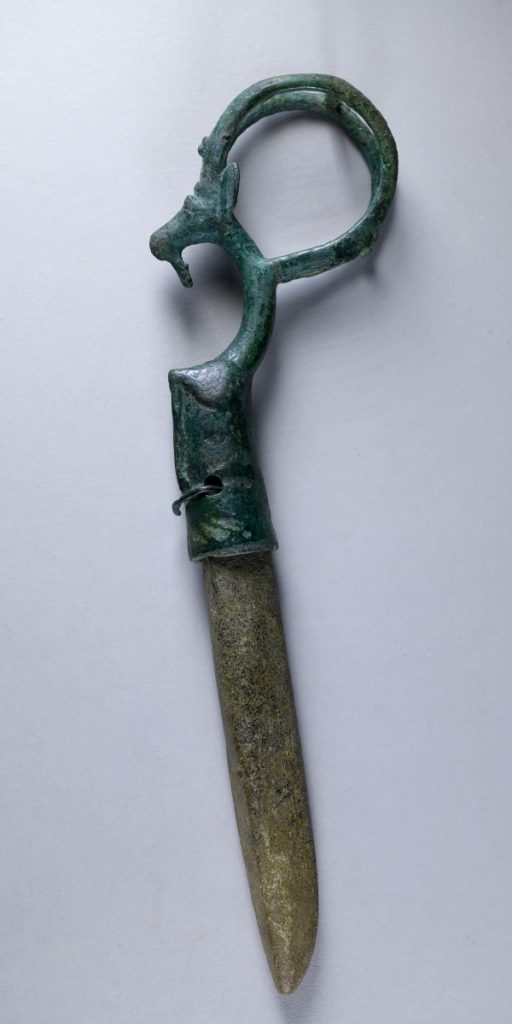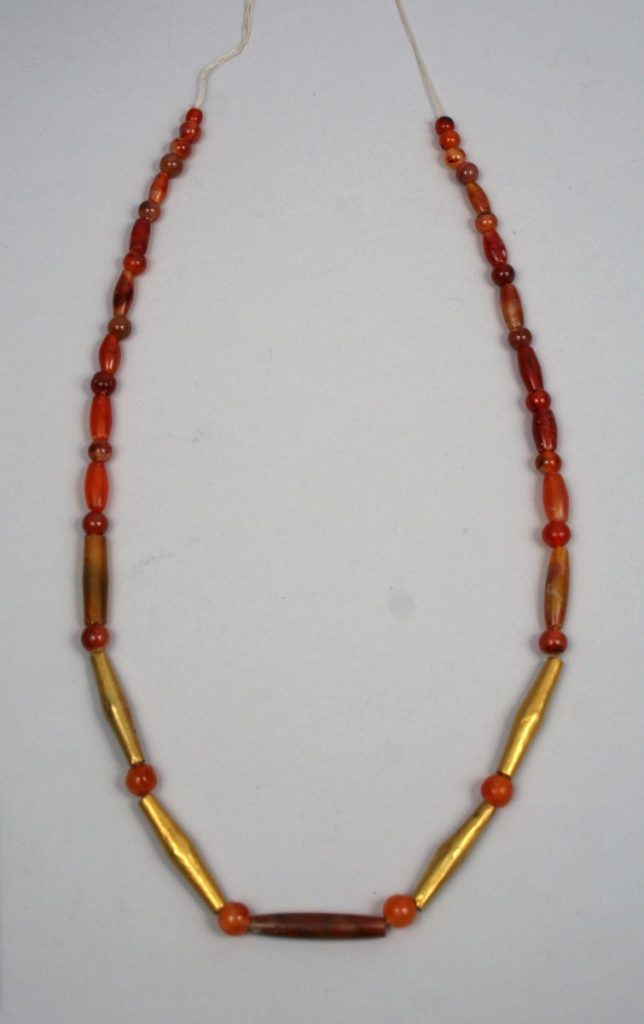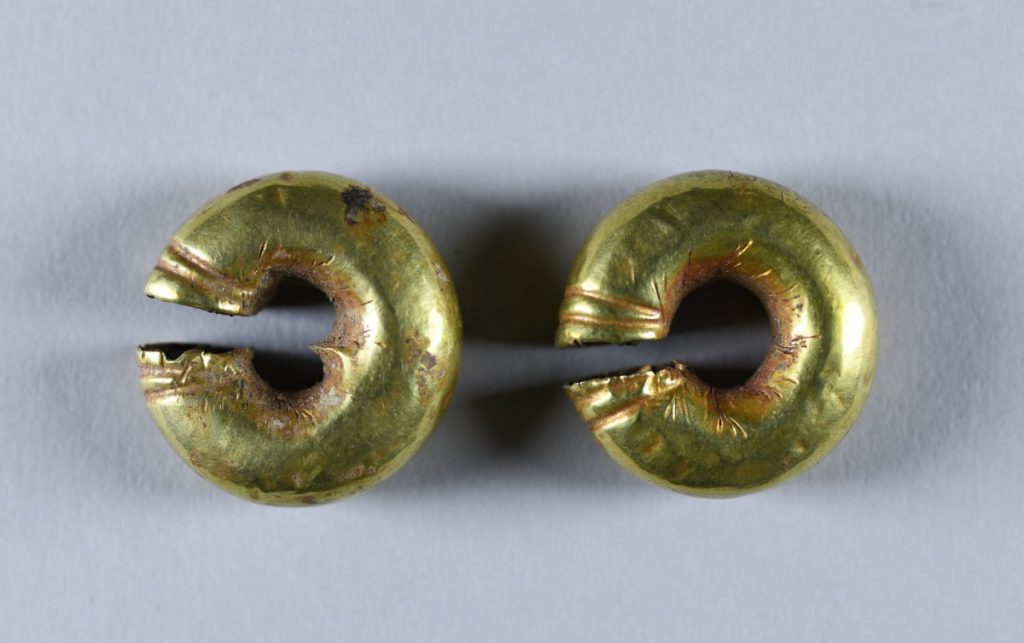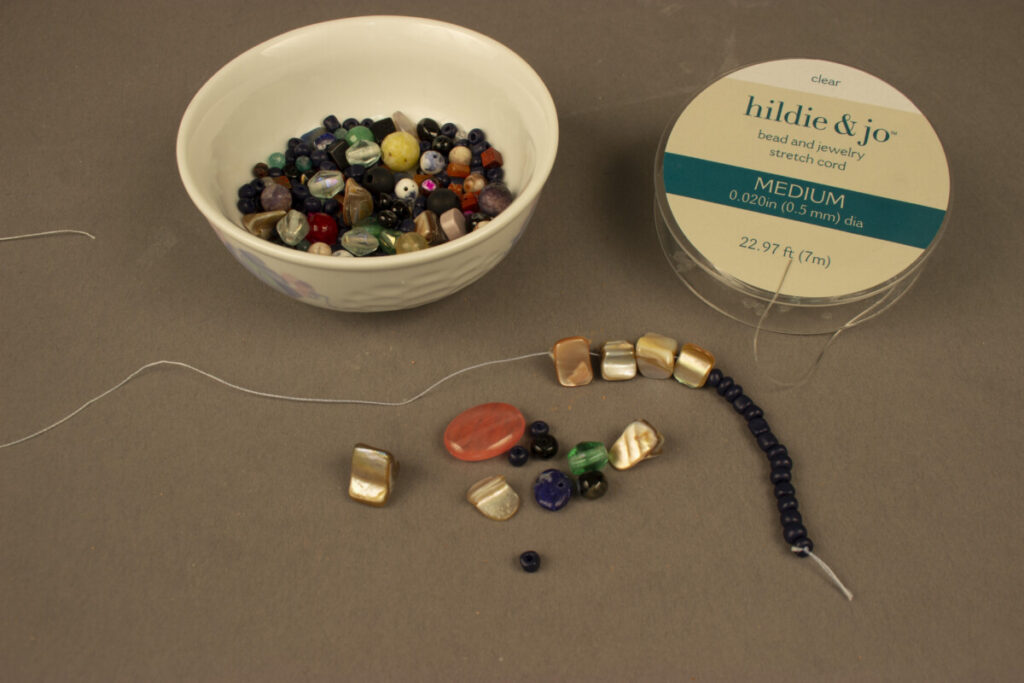Lesson Objectives: In this unit, students will learn about the natural resources that are present in the Middle East and the variety of ways that they were used. They will discuss the decorative and functional qualities of various materials and their capacity to reveal status in the Torah. During this unit’s hands-on project, students will bead their own jewelry.
Guiding Thematic Questions:
- What sorts of materials are used to make jewelry? weapons? buildings?
- Why are certain materials used to create certain objects and not others?
- What materials were considered “precious” in the Ancient Middle East? Now?
Historical Context:
- Some of the most ancient jewelry objects dating back to the ancient Middle East from the 3rd millennium BC were excavated from Queen Puabi’s tomb at Ur in Sumer including robes made of gold, silver, lapis lazuli, carnelian, agate, and chalcedony beads, gold pins and amulets, diadems, rings, gold earrings, and necklaces of semi precious stones.
- The breastplate worn by the high priests of the Israelites was described in Exodus as attached to a tunic made of 3 colors of dyed wool and linen and decorated with 4 rows of 3 engraved gems set in gold.
- There are 6 different types of metal mentioned in the Hebrew Bible– gold, silver, copper, iron, tin, and lead. They are mentioned in different contexts such as descriptions of products they were used to create as well as descriptions of mining and extraction methods.
Fun Facts:
- The national stone of Israel today is called the “Eilat Stone” which is a mixture of azurite and malachite, two types of stones whose colors are caused by a specific mineral naturally occurring within them: Copper.
Object Images:

Dagger
Western Iran
1000-800 BCE
Bronze, Stone
9” long
Carlos Museum, Emory University
1984.18

Necklace
Mesopotamia, Sumeria
2200-2350 BCE
Gold, quartz (variety: carnelian)
18” long
Carlos Museum, Emory University
2010.5.1

Pair of Earrings
Iron Age
1st millennium BCE
Gold
1” diameter
Carlos Museum, Emory University
2003.2.1AB
Classroom Discussion Questions:
Of all the objects you’ve seen so far in this course, can you name some of the materials that they’ve been made of?
Many functional objects are highly decorated when a more plain object could serve the same purpose. Why make them so beautiful?
List a few natural resources that were accessible in the ancient Middle East. Do we still use these materials today?
Think of some examples in the Torah where the importance of materials is emphasized.
How might someone make an item or object “precious,” even if it was made out of common materials? How does a material mark status?
What can the materials used and objects left behind by an ancient society tell us about them?
Project: Jewelry Making
Materials:
- key chains (optional), wire or string
- various beads
Instructions:
- give each students wire/string and a selection of beads
- add beads until you’ve achieved your desired length
- finish your bracelet, necklace, keychain, etc. by tying it off
